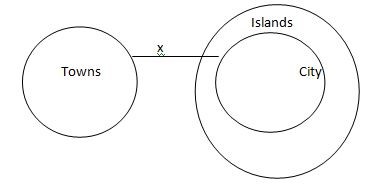Question
Statements:No town is a city. All cities are
islands. Conclusions:I. No island is a town. II. All islands are cities. In each of the questions below are given two statements followed by two conclusions numbered I and II. You have to take the given statements to be true even if they seem to be at variance with commonly known facts. Read all the conclusions and then decide which of given conclusions logically follows from the given statements disregarding commonly known facts. Give answerSolution
No town is a city (E) + All cities are islands (A) ⇒ Some islands are not towns(O*). Hence conclusion I does not follow. All cities are islands(A)⇒ Conversion⇒ Some islands are cities(I). Hence conclusion II does not follow. Alternate Method: 
What is the primary function of the RAM (Random Access Memory) in a computer system?
What is the primary goal of a software process?
Ideally the hit ratio of secondary memory is considered as?
Which is not a software development life cycle phase?
Which phase of the software process involves understanding the customer's needs and defining the system's functionalities?
What does a DFD (Data Flow Diagram) represent?
Which one is not a UML diagram?
A DFD is used to represent:
Which of the following is NOT a software quality attribute?
What is refactoring?
Relevant for Exams:



